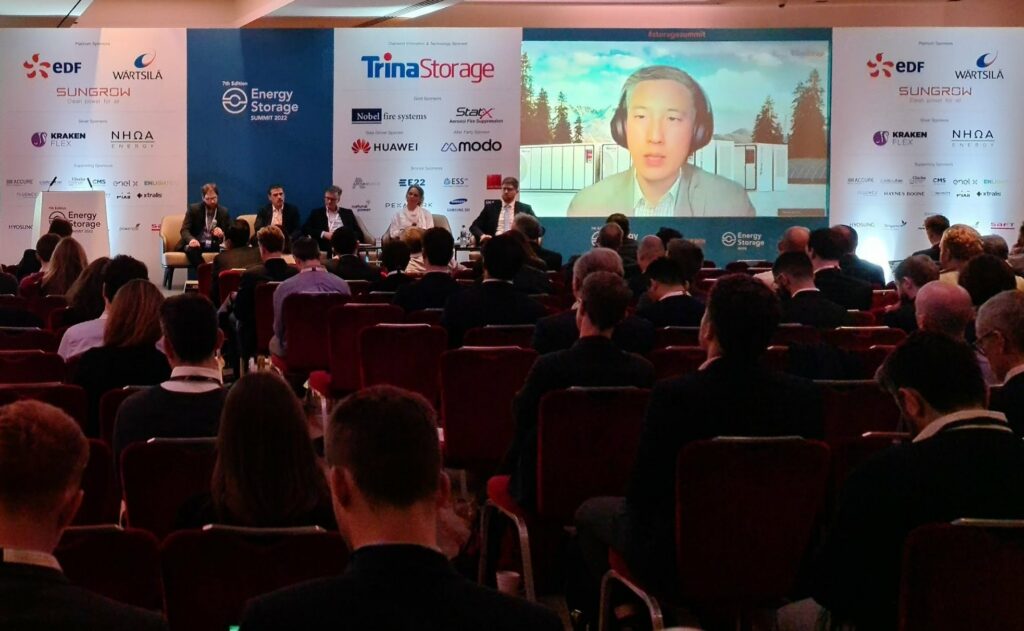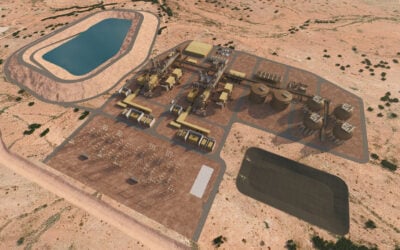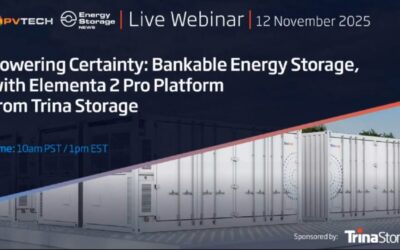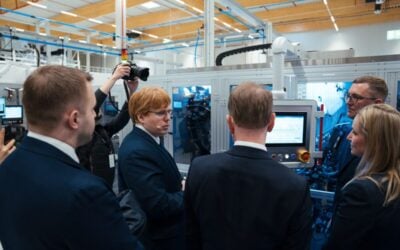
Pandemic-related supply chain issues for lithium battery materials hitting the energy storage space are just “bumps in the road” for the sector, and the supply chain will “come out stronger because of it,” according to panellists at the Energy Storage Summit 2022.
Well-documented problems with the supply of lithium materials have meant that the price differential between lithium-ion phosphate batteries and NMC (nickel, manganese and cobalt) has closed, said Giuseppe Artizzu, CEO for the global business line energy storage at energy storage and e-mobility solutions provider NHOA (formerly Engie EPS).
“No one would have predicted this a year ago,” he added, speaking during a discussion on the first day of the event held in London this week by our publisher Solar Media.
“The BESS market has grown faster than expected which is partially why these supply chain issues have arisen. But that challenge also represents an opportunity to grow. The supply chain will come out stronger because of it.”
Try Premium for just $1
- Full premium access for the first month at only $1
- Converts to an annual rate after 30 days unless cancelled
- Cancel anytime during the trial period
Premium Benefits
- Expert industry analysis and interviews
- Digital access to PV Tech Power journal
- Exclusive event discounts
Or get the full Premium subscription right away
Or continue reading this article for free
Chris Hewett, CEO of national trade association Solar Energy UK, was equally sanguine: “If the demand is there innovation and capital will follow. It may change the economics but fundamentally these are bumps in the road for BESS.”
In a discussion on navigating these issues, Julian Jansen, EMEA region growth & market development director for Fluence, added: “Without scale you have no chance. BESS will only account for 4% of lithium-ion demand over 2021-2030, so if you don’t have scale within that you will not be making a dent in the market.”
The discussion then moved on to the place for second-life batteries. Jansen and Hewett both said that second-life batteries would have a big role in the residential and commercial industrial (C&I) space but Jansen didn’t see them as a solution in the front-of-meter grid-scale sector, preferring recycling.
“It’s too early to say whether secondary cells will solve the problem,” said Alicja Kowalewska, principal for energy storage at Gore Street Capital. “But the confidence needs to be there that there is a market for them in order for people to go and build solutions around second-life batteries.”
Big picture drivers for localised supply chains
The question of second-life batteries provided a natural segway to discussing recent EU initiatives to increase supply chain transparency and encourage recycling of batteries, which can be seen as part of a wider policy shift to bring production closer to the West.
Julian supported this principle: “We need to bring supply closer to markets where the product is being delivered and not ship absolutely everything from the Far East. That will also be beneficial for ESG requirements, especially in light of new EU regulations.”
Jae Choi, Head of North American Region, Trina Storage: ”Diversifying the battery technology is a must for energy storage.”
He sounded a note of caution about diversifying for the wrong reasons, however: “We are seeing inexperienced developers come from solar and wind to ESS who contract different parties for each for part of the value chain to keep costs down. But this is a problem when things go wrong because it can take a while to figure out exactly what went wrong. Suppliers might point the picture at each other which can ultimately delay the project.”
Hewett added: ”Politically it is attractive to move the supply chain closer to home. We are early in the market and the UK is one of the fastest-movers on energy storage, so there is an opportunity to embed that supply chain here.”
Jansen said that new project developments already point to this achievement: “Current pipeline projects show that by 2035, Europe will be 43% of lithium battery production, up from 15% today, though of course that will mostly be for electric vehicles.”
Highlighting the EU’s push to increase the recycled component of batteries, he added: “You start creating a clear cycle of how the batteries are used, built, recycled and reused. That will be critical for the industry’s success and right now very few address all this. The way Northvolt addresses this move is incredible and pioneering and something we should all be looking at.”





